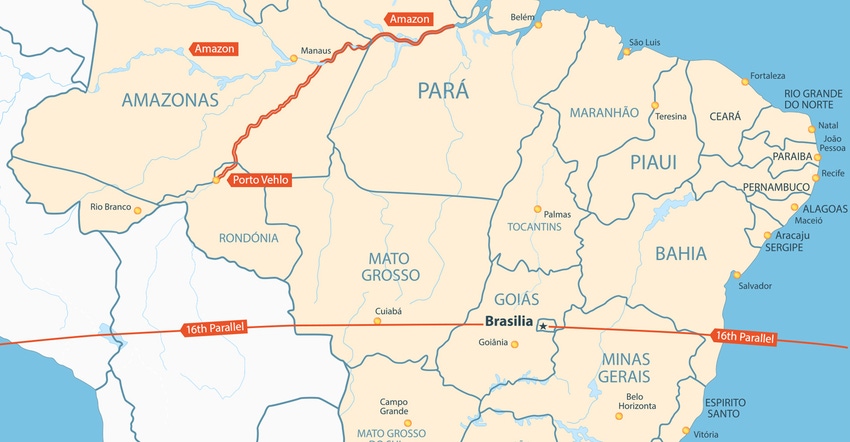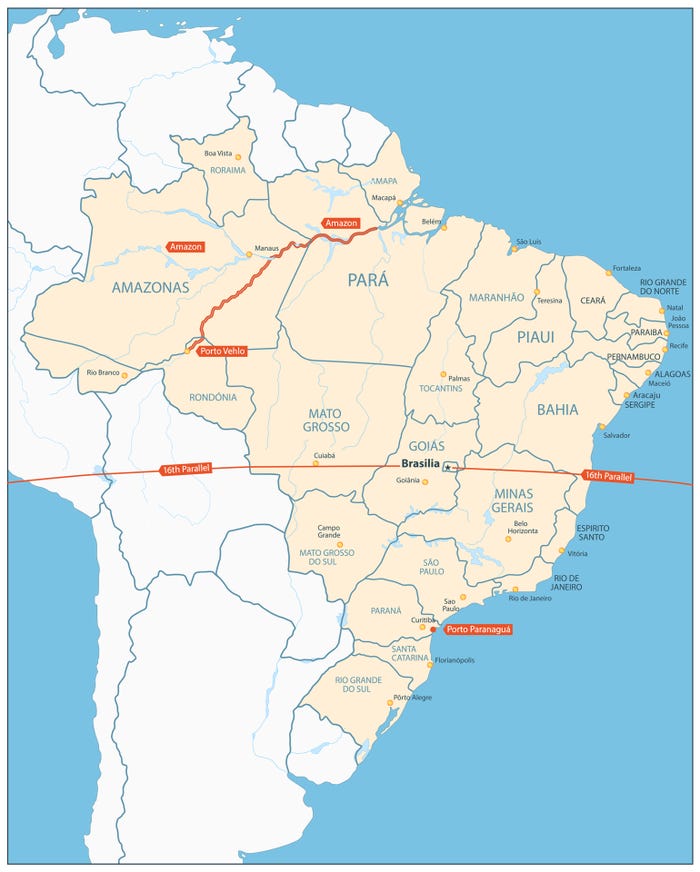
By late last week, Brazilian producers nationwide had harvested 17% of the 2017-18 crop, according to AgRural, a Brazilian ag news source.
Harvest progress was slowed by unending rains up in Mato Grosso, and had just gotten underway down in Parana State, the #1 and #2 Brazilian soy producers, respectively.
A lot of those Mato Grosso beans have to travel 1,200 miles or more South, by truck, to one of the country’s two main ports before being loaded onto Panamax ships headed back North and through the Panama Canal. And that road trip is costly. Brazilian Congressman Dilceu Sperafico noted a study by the country’s National Transport Confederation on the state of Brazil’s crumbling highway network over which those beans travel.
“The deficiencies and delays in the Brazilian highway system go far beyond poor-quality highways, one-lane or even dirt roads, to the outrage of extortionist tolls and the lack of cheaper and better transportation alternatives for agriculture’s increasing production and the territorial size of the country,” says Sperafico.
To give you an idea, the cost of trucking soybeans from Sorriso—whose farmers are among the first in the country to plant their beans each year—to Brazil’s second-largest port of Paranagua, comes to as much as $2.39 per bushel. The 570-mile truck trip from nearby Sapezal to Porto Velho—an Amazon River tributary—costs just $1.22 per bushel, but space is limited, as river levels drop too low for barges during the dry season, from May through October.

16th Parallel
Draw a straight East-West line across Brazil passing just South of the federal capital, Brasilia. That’s the 16th Parallel, and most soybeans are produced these days from that line North (Check out my blog post on Brazil’s Northern ports.) And with soy production comes a lot of second-crop corn production, too (though heavy harvest rains in the #1 second-crop corn state of Mato Grosso this year will likely cut 2017-18 production.)
And, in Calendar Year 2017, corn exports via one of six ports on the Amazon or its tributaries are expected to increase by nearly 72% over Calendar Year 2016, says Brazil’s National Waterways Agency.
Soybean exports from ports North of the 16th parallel went up 31.5% during the same period. Roads to those ports are often in the worst condition of all, and both rail and bimodal passages to them are either incomplete or still on the desks of planners But the distance is shorter, and the Brazilians are taking advantage of that fact.
There’s no reason to think Northern ports will handle fewer tonnes of beans and corn in 2018 than in 2017. In fact, the numbers seem likely to grow, cutting into the U.S. shipping cost advantage in terms of soybeans and corn. Think of the increased use of lower-cost Northern Brazil ports as a sort of Valentine’s card to China. Cheaper soybeans and corn, after all, is even better than chocolates and flowers.
The opinions of the author are not necessarily those of Farm Futures or Farm Progress.
About the Author(s)
You May Also Like






